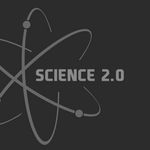Optics

There will never be another large telescope built in the United States, due to the influence of environmental activists, so those high-paying multicultural white collar jobs are instead going to Chile. But if we want even better conditions. Dome Angus, the highest ice dome on the Antarctic Plateau near the centre of East Antartica, is where to be, finds an analysis.
The problem is that, unlike Chile, no one wants to live there. That's due to the conditions that make it great for a telescope; high altitude, low temperature, and long periods of continuous darkness.
But if people do want to live…

Using light waves to accelerate supercurrents can discern forbidden light the quantum world, where the conventional laws of physics are already forbidden.
Supercurrents are scientifically strange. At super cold temperatures, they can give us electricity that moves through materials without resistance and use of light pulses at terahertz frequencies- trillions of pulses per second - to accelerate electron pairs, known as Cooper pairs, within supercurrents, led scientists to "second harmonic light emissions," or light at twice the frequency of the incoming light used to accelerate electrons.…
Light propagation usually goes both ways; it is reciprocal in that the trajectory of light traveling one direction is identical in the opposite direction.
Isolators and circulators, which make light propagate only in one direction, are vital building blocks in many modern laser and communication systems, but are almost exclusively based on the magneto-optic effect, making devices bulky and difficult for integration. A magnetic-free route would be a great breakthrough for many optical applications.
Recently, scientists developed a new type of optical metasurface with which phase…

Even if you are obsessed with "natural" things, the awesome power of physics can still help you make fun colors. It's all thanks to “structural color,” the ability of an object to generate color simply by the way light interacts with its geometric structure.
“The typical way you get color is with dyes or pigments, which have molecules that selectively absorb and scatter specific wavelengths of light,” said Lauren Zarzar, assistant professor of chemistry at Penn State and a leader of the research team behind a new paper on the subject. “Structural color is different. It’s a product of light…

A new photoelectrode can harvest 85 percent of visible light in a 30 nanometers-thin semiconductor layer between gold layers, converting light energy 11 times more efficiently than previous methods, another step on the road to turning solar power from an expensive subsidized sideshow into the default energy of the future.
While natural gas has done much to cause energy emissions in developed nations to decline, it remains under constant attack. Since nuclear will likely never recover from the public relations campaigns waged against it by environmental activists, and wind is a…

Bumblebee safety alert; don't put holograms in that meadow or near the urban beehive you probably regret buying. A new study shows that bees, which are already confounded by lots of different things, are mystified by iridescent colors, colors that seem to change based on the angle you view them from. Like bubbles do.
Holograms are not yet common, but iridescent colors are actually everywhere in nature, from peacock feathers to insect camouflage. And evolution works. Bees, like probably many other insects, are baffled by iridescence. It obstructs the bumblebee's ability to identify…

Physicists from the ATLAS experiment at CERN have confirmed one of the oldest predictions of quantum electrodynamics (QED), finding the first direct evidence of high energy light-by-light scattering, a very rare process in which two photons – particles of light – interact and change direction.
Direct evidence for light-by-light scattering at high energy had proven elusive for decade but as the Large Hadron Collider’s second run began in 2015 it collided lead ions at unprecedented collision rates. Heavy-ion collisions provide a uniquely clean environment to study light-by-light scattering. As…

Two new studies can't prove a link between childhood cancer and light therapy for newborn jaundice but the authors say it still raises enough questions that clinicians should exercise caution in prescribing the treatment for infants whose jaundice is likely to resolve on its own, though that should not deter use of the treatment, known as phototherapy, in babies who otherwise would be at risk of brain damage or hearing loss.
An editorial and two companion studies in Pediatrics examined an association between phototherapy and pediatric cancers. The first study, the California Late Impact of…

Photosynthesis, vision, and many other biological processes depend on light, but it’s hard to capture responses of biomolecules to light because they happen almost instantaneously.
Recently, scholars were able to capture snapshots of these ultrafast reactions in a bacterial light sensor using the X-ray laser at the SLAC National Accelerator Laboratory. They were able to see atomic motions as fast as 100 quadrillionths of a second, 1,000 times faster than ever before.
Further, “We’re the first to succeed in taking real-time snapshots of an ultrafast structure transition in a protein, in which…

Most of us think nothing of rainfall or where it goes, unless it leads to flooding or landslides. But soil scientists have been studying how water moves across or through soil for decades. Daniel Hirmas, a professor at University of Kansas, and his team may be taking the study of soil hydrology to some exciting new territory. Territory that may help soil scientists manage water resources better.
Why is Hirmas trying to predict water movement in soil?
"There are a number of reasons why more accurate predictions of water flow is important. Better management of water resources is one," Hirmas…